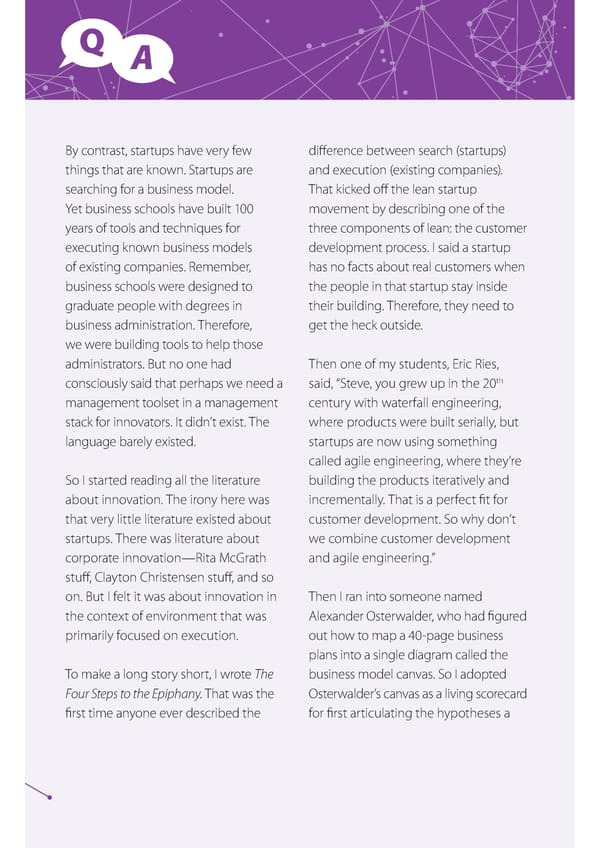Q A By contrast, startups have very few difference between search (startups) things that are known. Startups are and execution (existing companies). searching for a business model. That kicked off the lean startup Yet business schools have built 100 movement by describing one of the years of tools and techniques for three components of lean: the customer executing known business models development process. I said a startup of existing companies. Remember, has no facts about real customers when business schools were designed to the people in that startup stay inside graduate people with degrees in their building. Therefore, they need to business administration. Therefore, get the heck outside. we were building tools to help those administrators. But no one had Then one of my students, Eric Ries, consciously said that perhaps we need a said, “Steve, you grew up in the 20th management toolset in a management century with waterfall engineering, stack for innovators. It didn’t exist. The where products were built serially, but language barely existed. startups are now using something called agile engineering, where they’re So I started reading all the literature building the products iteratively and about innovation. The irony here was incrementally. That is a perfect fit for that very little literature existed about customer development. So why don’t startups. There was literature about we combine customer development corporate innovation—Rita McGrath and agile engineering.” stuff, Clayton Christensen stuff, and so on. But I felt it was about innovation in Then I ran into someone named the context of environment that was Alexander Osterwalder, who had figured primarily focused on execution. out how to map a 40-page business plans into a single diagram called the To make a long story short, I wrote The business model canvas. So I adopted Four Steps to the Epiphany. That was the Osterwalder’s canvas as a living scorecard first time anyone ever described the for first articulating the hypotheses a
 Enterprise Agility: Pushing Innovation to the Edge of the Organization Page 22 Page 24
Enterprise Agility: Pushing Innovation to the Edge of the Organization Page 22 Page 24